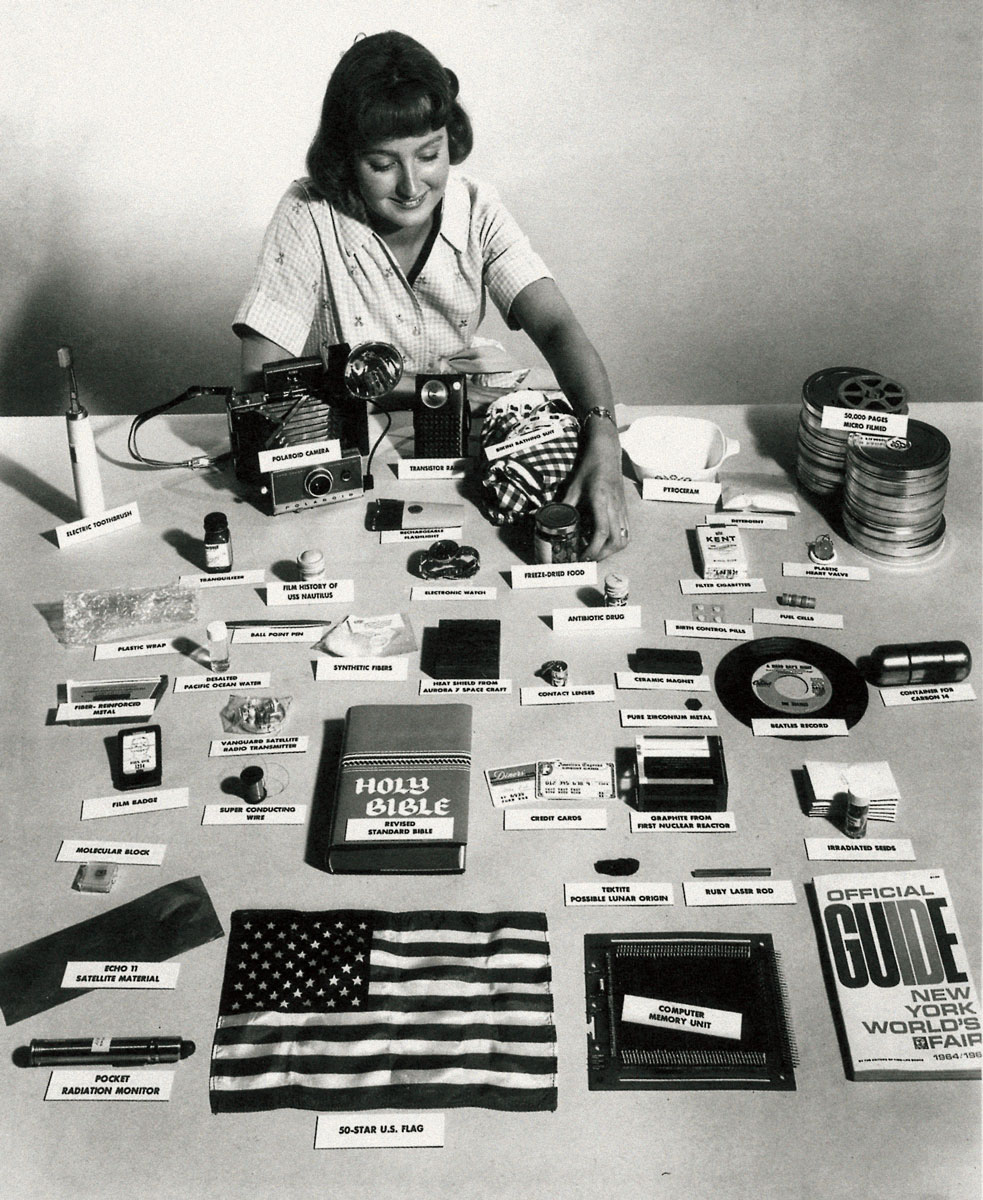The Cabinet Time Capsule
A call for contributions
Cabinet

Coined in 1939 by Westinghouse publicist G. Edward Pendray on the occasion of the company’s seven-foot-tall, torpedo-shaped container built for the 1939 Word’s Fair, the phrase time capsule gained full acceptance into language when the Oxford English Dictionary opened its hallowed covers and allowed the American term into its 1989 edition. But the concept predates the wording, if not language itself. The Babylonians and Sumerians, for example, inscribed messages to the future on clay tablets in their building foundations, and many ancient cultures buried artifacts along with their dead for future use. One feature, however, distinguishes the contemporary American notion of the time capsule from its precursors: the instruction that the capsule be reopened at a specific date. Historians usually credit Mrs. Charles Diehm, a Civil War widow, as having masterminded the first time capsule to achieve its targeted retrieval date. Sealed in 1876 for the Centennial Exposition, the Century Safe was to be opened during celebrations for the US bicentennial. When President Gerald Ford, presumably accompanied by Betty Ford, opened the capsule in 1976, among its contents was a book on temperance. The first scientific time capsule waited for assembly until 1940, when Dr. Thornwell Jacobs, president of Oglethorpe University in Atlanta, Georgia, devised the Crypt of Civilization to be opened in 8113 AD—a date as far into the future as 1940 was from 4241 BC, the presumed year in which the Egyptian solar calendar was established. The Crypt’s carefully selected array of items was meant not only to offer a full record of life in 1936 but also to preserve all the accumulated knowledge of mankind up until that time. It remains buried on the grounds of the college.
For this issue, Cabinet is gathering material for a time capsule of its own. Being a magazine, we will traffic in what we know best: words and images. We therefore encourage you to send for our time capsule either a small photograph (4 by 6 inches or so) taken on 1 September 2004 of the sky immediately above your house, or the most interesting sentence you read on that same date. The gathered photographs and texts—an ersatz magazine of sorts—will be placed in a sealed container and interred in the Burial Plot at Cabinetlandia, the tract of scrubland in New Mexico owned and operated by the magazine (confused or otherwise incredulous readers should please refer to issue 10).
Since we would not like the US government to accuse us of any Sumerian tendencies, we will set a date for the capsule’s retrieval: 1 September 2014. It may, of course, transpire that the magazine is no longer active then and that the capsule will not be retrieved. In that case, its contents will remain a magazine-in-the-making, possibly with no readers, or none whose existence we can predict. In this way, it will be, perhaps, not unlike the magazine you are holding in your hands.
For more information on time capsules, see the website for the International Time Capsule Society run by Paul Stephen Hudson: crypt.oglethorpe.edu/international-time-capsule-society/
Spotted an error? Email us at corrections at cabinetmagazine dot org.
If you’ve enjoyed the free articles that we offer on our site, please consider subscribing to our nonprofit magazine. You get twelve online issues and unlimited access to all our archives.